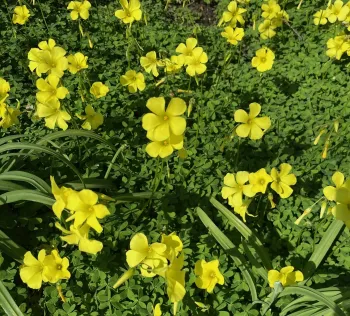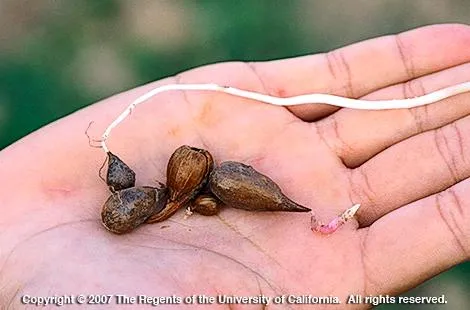Bermuda buttercup (Oxalis pes-caprae), also called buttercup oxalis or sourgrass, might be a familiar sight in winter and spring, particularly to those who live in coastal regions or the Sacramento Valley. Some people enjoy seeing this plant’s cheerful yellow flowers pop up in their spring gardens, but for some, it is more of a nuisance than its appearance suggests.

Originally introduced to California as an ornamental plant, Bermuda buttercup is now considered invasive because it can take over yards, gardens, and natural areas. The California Invasive Plant Council (Cal-IPC) rates Bermuda buttercup as moderately invasive due to the ecological damage it causes. Because its flowers don’t produce seeds, its spread is limited to the production of underground rhizomes and bulblets and the movement of infested soil. Despite this limitation, it can aggressively spread and outcompete desired plants in areas where it has been introduced.
Bermuda buttercup can grow in most any environment and tolerate many soil types. Look for bright yellow flowers on long, succulent stalks and bright green clover-like leaves made up of three heart-shaped leaflets; flowers and leaves are arranged in a loose basal rosette close to the soil’s surface. Though its foliage dies back when the weather heats up, it will resprout from bulblets the following winter.

Because it is difficult to control, prevention is key: don’t move Bermuda buttercup-infested soil to non-infested areas in your garden or elsewhere. Hand weeding can be effective for small infestations, but you must remove rhizomes and bulbs as well. Use a tool like a weed knife to remove as many of the white or brown teardrop-shaped bulblets as you can. Soil solarization, sheet mulching, landscaping fabric, and some herbicides can also be used to help suppress this weed.
For more information, visit UC IPM’s Pest Notes: Creeping Woodsorrel and Bermuda Buttercup.

